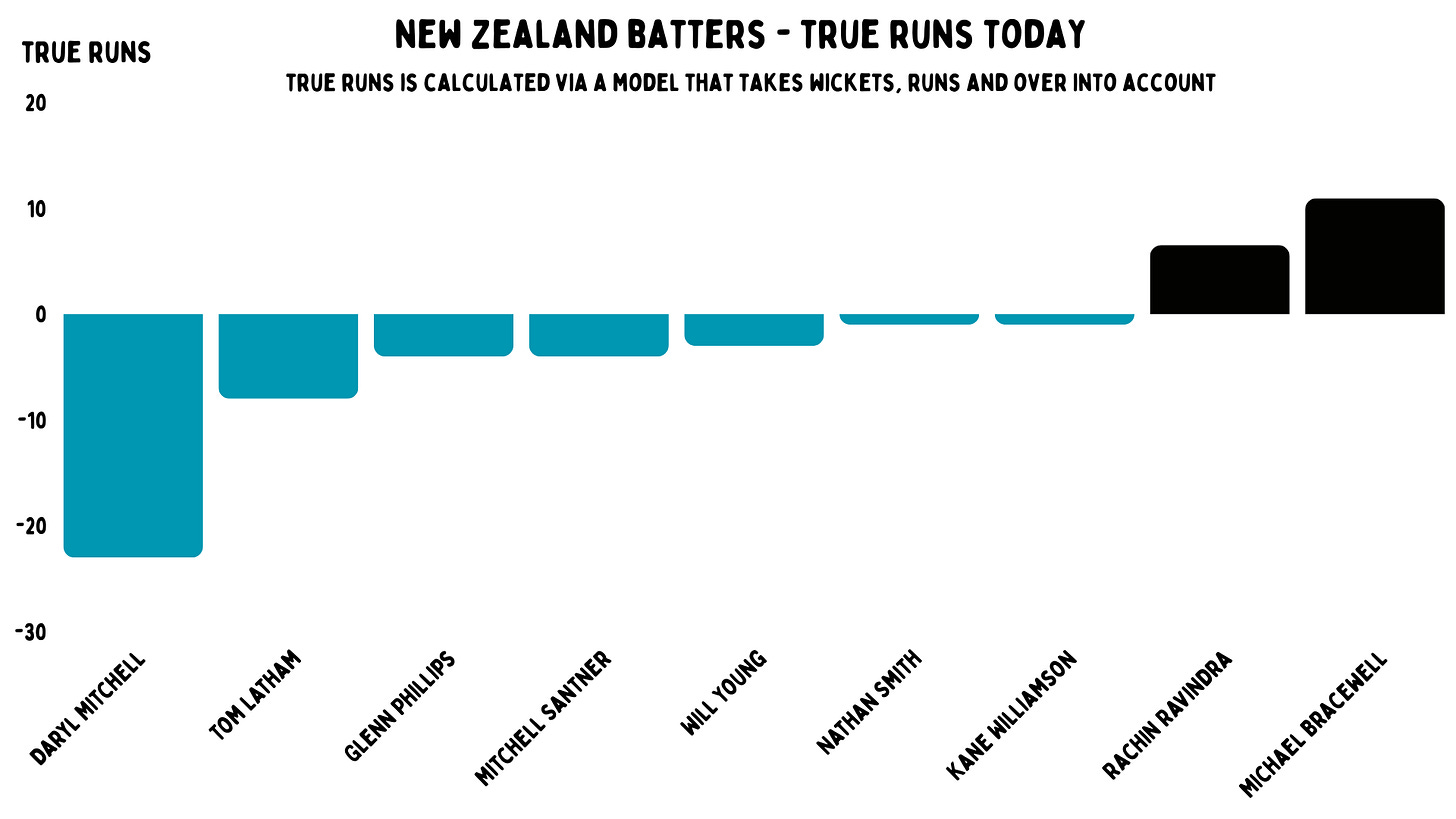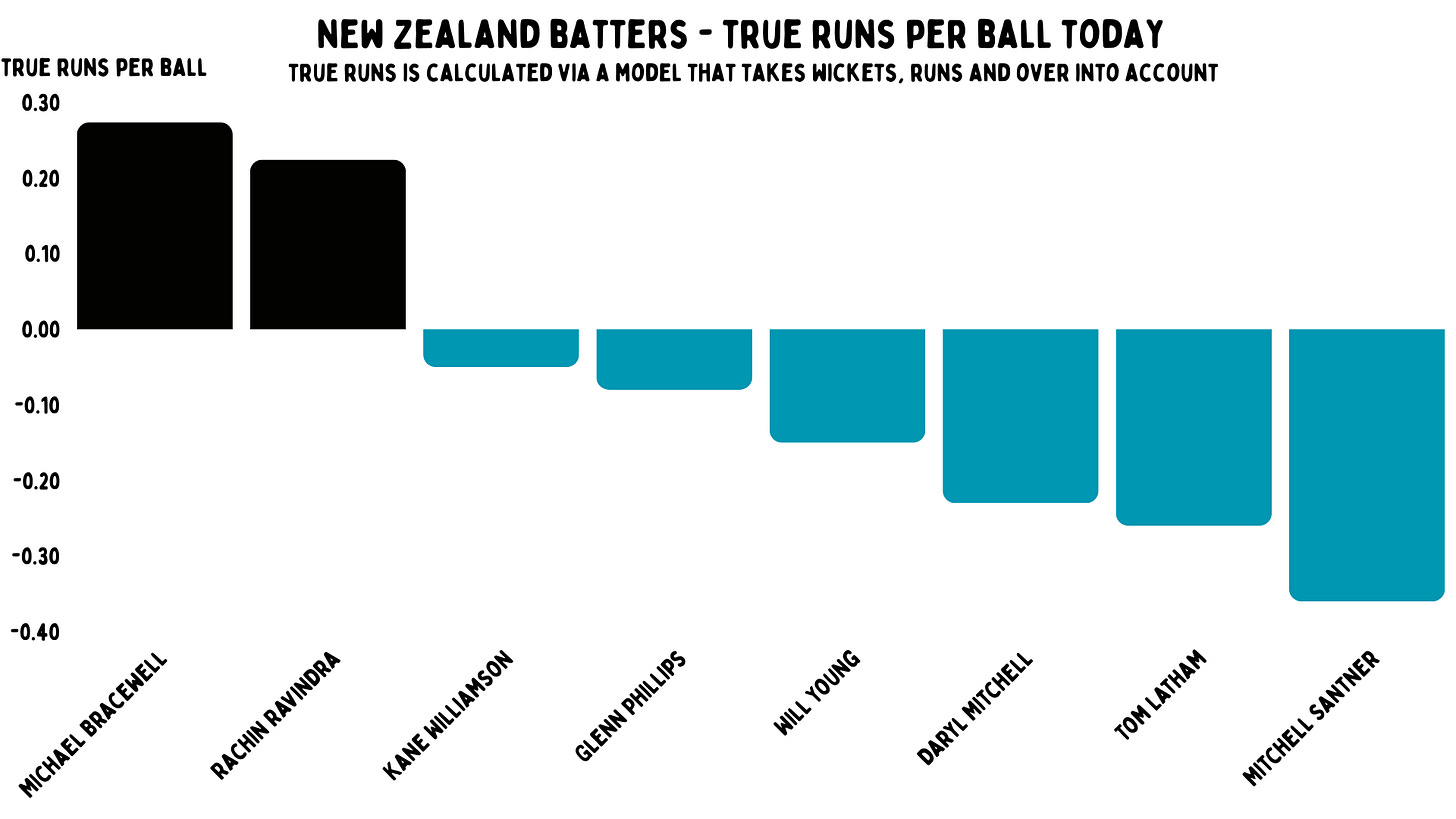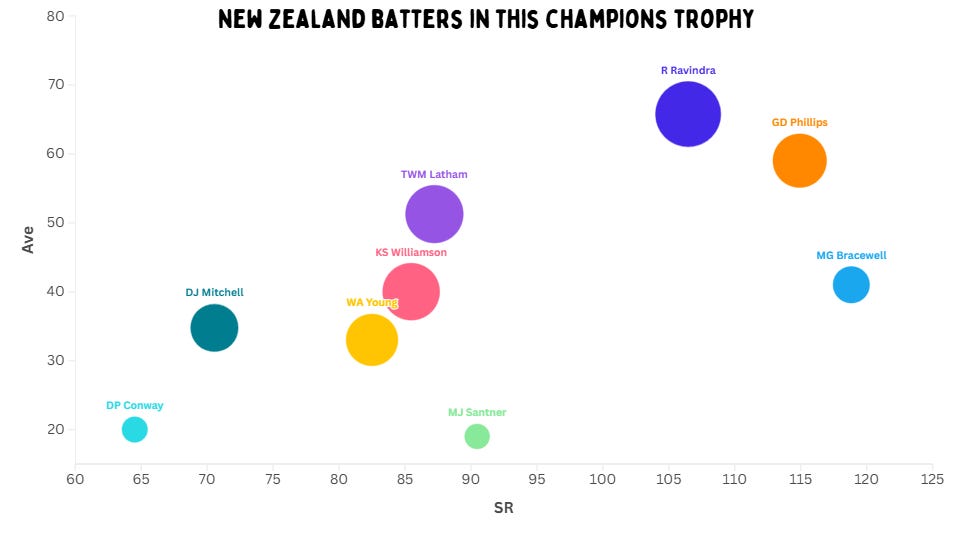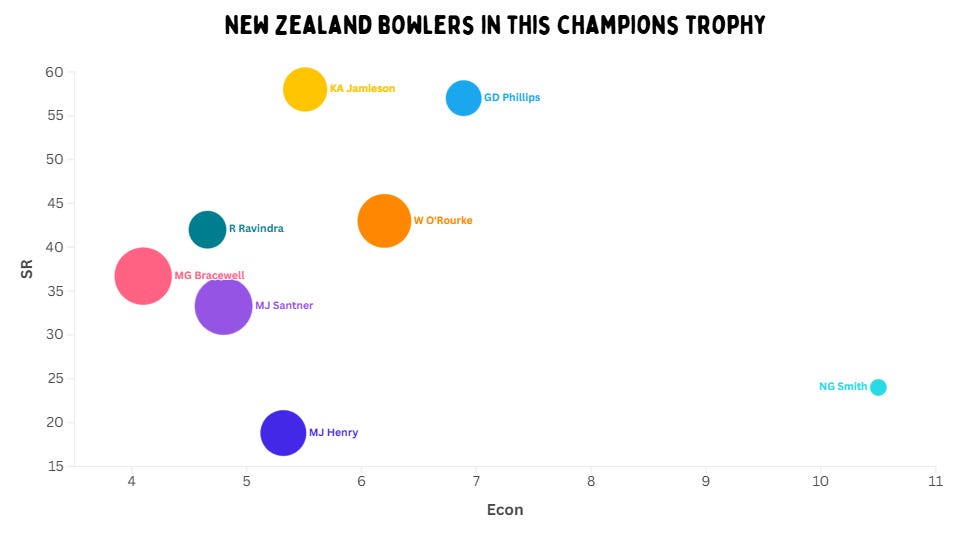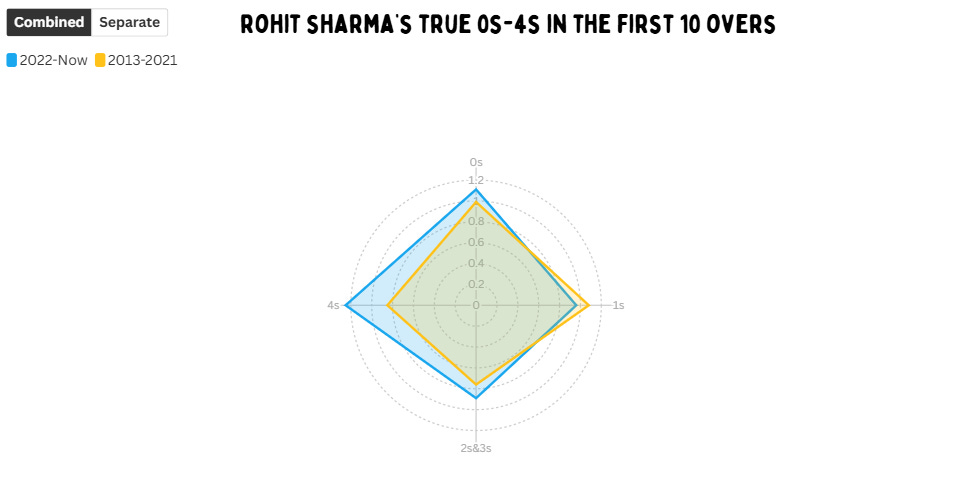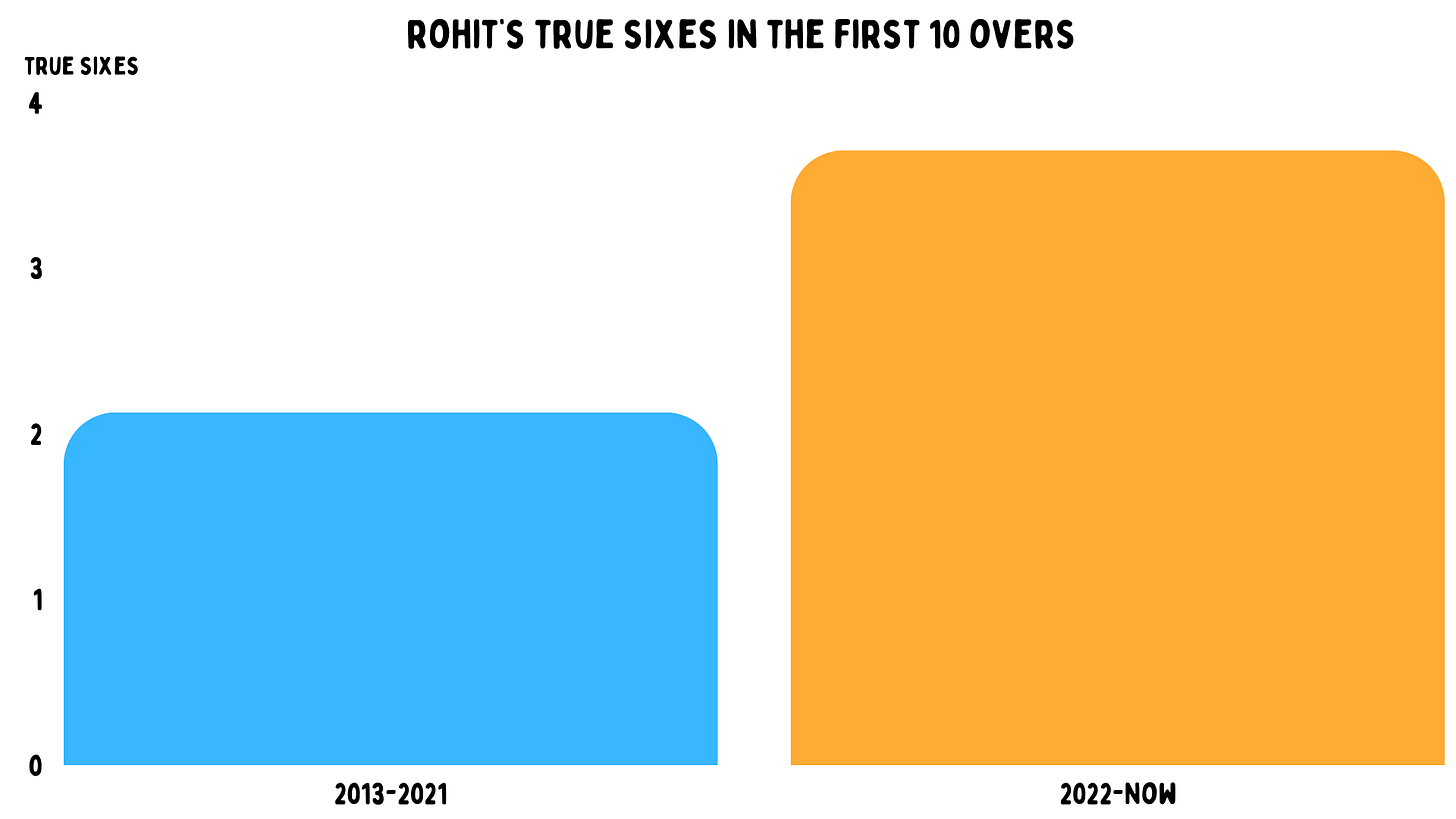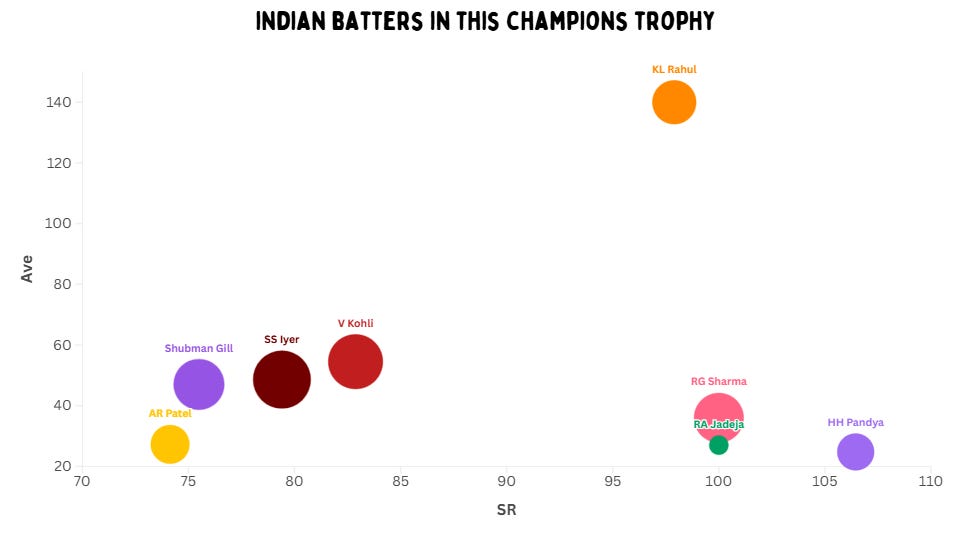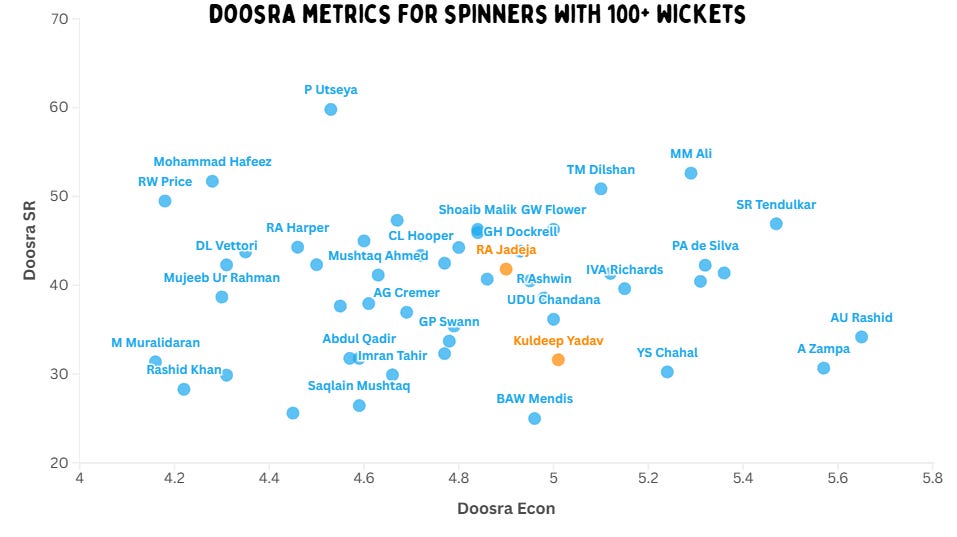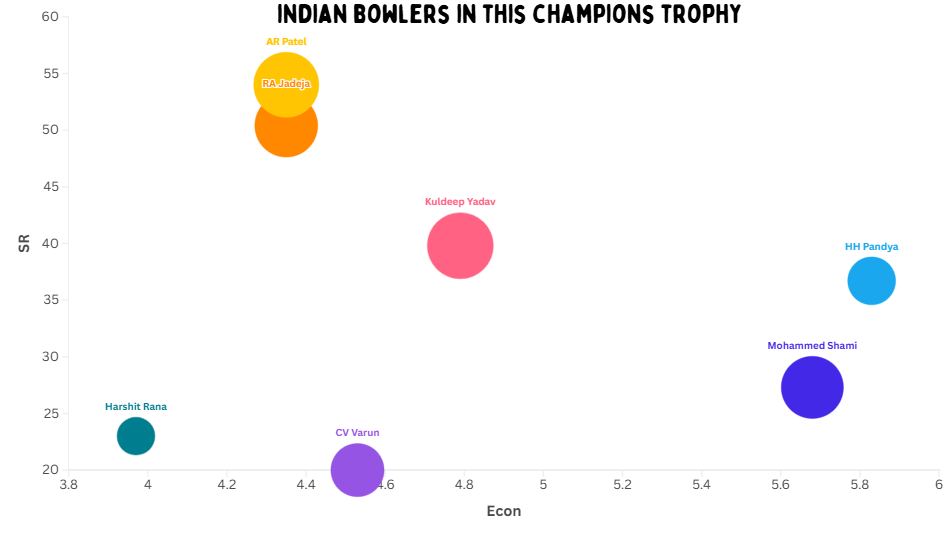Even when India win, they can't win
They were the best team by a mile. They were the obvious choice to win. But there will be an asterisk to their victory for reasons that have nothing to do with the players.
We have come to a point in cricket where no one actually believes the coin toss anymore. Deciding who bats or bowls first should be as simple as flipping it in the air and then the winning captain deciding.
But at the 2023 World Cup, there was a conspiracy that the tosses were rigged because India kept winning them. This isn’t just people online, even some in the game were asking the question.
Is India’s coin actually rigged? Is it weighted more to one side?
And it was clearly a preposterous claim, made more hilarious by the fact that in the final they lost the toss.
But the truth is, many things in cricket are weighted towards India already. We don’t need magic coins.
The Indian Cricket team won the Champions Trophy. But sometimes even when you win, you can’t win.
India were favourites for the tournament when it was scheduled to be only in Pakistan. If it was moved to South Africa, they would probably still be favourites. They remained the most backed team even when the world’s best white-ball player wasn’t going to play.
On top of the bilateral success, India had also just won a T20 World Cup and made an ODI final. You could play this tournament on Mars with a pinecone, they were still the obvious choice to win.
And they did.
But for many there will always be an asterisk. Which makes sense, but is completely unfair to the team who is very good at cricket.
The reason all their games were played in Dubai was not because the team requested wickets that would suit them. The pitches in Pakistan still would have been very nice to them. It’s because of politics and decisions made way above their heads. The Indian cricket team is a political entity, and that didn’t start recently. This decision was never going to be in the players’ hands.
Now, if another team did what India had done, they might have been replaced from the tournament. But this tournament only exists because India play in it. The World Cup would still make lots of money if India didn’t play one year. The Champions Trophy has been cancelled three times, with them turning up. The decision to allow them to play in another country had nothing to do with the players.
The other point was that all their games were in Dubai. When it comes to squad selection, I’m not sure India would have made any changes to their group if they were playing in two places, or in Pakistan. However, you can make the argument that other teams might have slightly changed their plans if they knew they’d only play at one ground. But we are talking about fringe players anyway. The best fit cricketer not at this tournament is Yashasvi Jaiswal. He walks into every team, and is the best batter in a lot of them. And India didn’t need him.
But playing at one ground is clearly an advantage. Not just in squad selection, but also because India didn’t have to travel. The New Zealand players have barely been off planes long enough to have a match. And India are getting a lovely bus out to Sports City. There is no doubt this was a massive advantage, but again, the players had nothing to do with this. If the ICC had said they had to split their matches between Dubai and Sri Lanka, they would have done that. But there was no way that was going to happen.
The ground, more than the pitch, was probably India’s biggest advantage. India might still have played the four spinners in Pakistan, although it’s less likely. But in Dubai, even on days it didn’t turn much, the size of the ground helped their spinners. But it’s worth noting that on current form, India have four of the best eight spinners in the world. Unless their wickets in Pakistan were on ice, they’d have been handy. And the players did not pick Dubai as their ground. It’s just the solution for every problem in cricket, from tax dodging to back-up events.
If India did play on the faster scoring wickets in Pakistan, their batting, which was by far the best in this tournament, would have been good there. Ravindra Jadeja batting at eight is like using a lamborghini to go next door for some sugar. And they also had six frontline options with the ball in every game to throw at those situations.
This team has a top four that is actually obscene. It has three world-class all-rounders. A gaggle of great spin. And one of the best strike bowlers in history. Remember, they started this tournament without Varun Chakravarthy.
Sure, other teams had more injuries than them but no team lost anyone as good as Jasprit Bumrah either. Rishabh Pant never came off the bench. Mohammed Siraj is on a beach somewhere. This is a great team, who had to overcome a smart, locked-in New Zealand. I mean just beating Glenn Phillips in the ring is a challenge. They literally threw themselves at India. And it still wasn’t enough.
Maybe if India had travelled to Pakistan, things would have been different. This was a close game, maybe some more time in pressurized tubes could have evened it up.
Or India might still win. But we can only look at what happened in front of us. In this, the best team won, but they certainly had the coin weighted in their favour.
Sports fans love the asterisk because it allows them to frame winning or losing based on their personal beliefs. And there is no doubt there’s plenty of stuff here to use if you want it.
The issue really is, that the very good cricket team won because they are very good. And it’s harder to enjoy because of the political and financial decisions that were made by people who did not go out on a cricket field to play.
This tournament ended up with the rightful winners, and because of the nonsensical way cricket is run, many won’t feel that way.
In the 2023 World Cup, India started in Chennai, before heading to Delhi, Ahmedabad, Pune, Dharamsala, Lucknow, Mumbai, Kolkata and Bengaluru. They were on an Indian tour. Trying to play in as many places as possible because they are not just a cricket team. They are a brand that is used to make political and financial gains. They are rinsed dry by people with their own intentions.
The Indian cricket team is full of amazing stories of people beating the odds just to play the game. They all came together and won an ICC trophy. They had little to do with the nonsense. They just play cricket.
But even when they win, they literally can’t win.
Some notes on today’s game by Shayan and Varun
New Zealand:
The concept of true runs is quite simple. We’ve trained a model that takes ODI data from 2016 to take into account the runs on the board, the wickets lost, the over and the balls faced by a batter to predict what they’ll score on that ball. We then calculate the difference between the runs scored and runs predicted to get the true runs. Positive is better.
The batters that had the best true runs for the Kiwis were Michael Bracewell and Rachin Ravindra, who was 11 and 7 runs better than expected, respectively. Daryl Mitchell was 23 runs worse than expected.
This is just figuring out true runs per ball to not let the number of balls be a major factor. Even after that, Bracewell and Rachin are near the top, being 0.27 and 0.22 runs per ball better than expected. But if it isn’t obvious, New Zealand just had too many batters batting at a below par rate.
Rachin Ravindra was an absolute star in this tournament. Despite missing the first game, he was the top run-getter – scoring 263 runs at above a run a ball. He scored tons in Rawalpindi and Lahore (semi-final), and gave New Zealand a brisk start in the final. Their other two batters with over 200 runs were Tom Latham and Kane Williamson, both striking at around 85 to 87. Latham scored a ton in the tournament opener, while Williamson joined forces with Rachin in the semi-final.
Glenn Phillips also had a solid tournament, accumulating 177 runs at a strike rate of 115. Michael Bracewell played a very good innings in the final. Will Young started the tournament with a century, but only made another 58 runs in the next four knocks. Daryl Mitchell made runs in both the semi-final and final, but spinners were able to keep him quiet throughout the tournament.
Matt Henry finished with the most wickets (10) in the tournament. Simply no other Kiwi bowler even came close to him in terms of striking as often. It was extremely sad from New Zealand’s point of view that he couldn’t make the final, which meant they lacked an elite new ball bowler (3/88 in 19 overs). Plus, he also bowled very well at the death, conceding only 6.35 runs per over and picking up 7 wickets in that period.
Will O’Rourke got 6 wickets at an economy of 5.07 in the group stage, but went for 125 runs in 15 overs in the semi-final and final without picking up a wicket.
Santner was also outstanding as a defensive spinner, going at less than five runs per over and striking once every 33.3 deliveries. Bracewell was even more frugal with the ball – he had an economy of just 4.1, with 8 wickets to his name. Rachin also bowled a few handy overs.
India:
From 2013 to 2021, Rohit Sharma was one of the best run accumulators in the world. But he wasn’t even close to being as effective in maximizing the first ten overs compared to his high-intent version. He went from being 1% below par in terms of dot balls faced, to 11% above. He takes fewer singles than expected now than he used to, but the number of 2s and 3s have gone up. But the game changer here is clearly the amount of fours he’s smashing – he went from 15% less than expected to 25% more.
He was an elite six-hitter even when he was a proper accumulator, being 113% better than expected. But even that has risen up to 271%, which simply outstanding. In the final, he smashed 5 fours and 3 sixes when the field was up. That allowed India to stay ahead of the game, despite a few tight overs in the middle period.
Shoutout to KL Rahul for absolutely ruining this graph. He kept collecting red inkers like Infinity Stones in this tournament. His knocks against Bangladesh, Australia and New Zealand were really valuable. Shreyas Iyer was the top run-getter, finishing with 243 runs at a strike rate of 79.41. The hallmark of his game was consistency – he scored above 40 in four out of five innings. Virat Kohli had two solid knocks against Pakistan and in the semi-final against Australia, rotating strike very comfortably.
Rohit Sharma – who kept getting starts but didn’t kick on – seemed to have saved his best for the final. Shubman Gill kicked off India’s campaign with a class century against Bangladesh, runs against Pakistan, and was part of a hundred-plus opening stand in the final. Axar Patel and Hardik Pandya also played crucial knocks at different junctures of the tournament.
In the big final, it was Kuldeep Yadav who was the point of difference with the ball. He dismissed Rachin Ravindra and Kane Williamson, which allowed India to choke New Zealand’s flow of runs in the middle overs with spin. If we look at his true 0s to 6s, we observe that it is difficult to stay off strike or take singles off his bowling. Batters do seem to be able to take doubles and triples more often than expected though. When it comes to boundaries, he concedes 12% more sixes than par for the overs he bowls, but a whopping 58% fewer fours. In this game, he conceded just two fours, one six and bowled 34 dots.
According to the adjusted numbers, he concedes 5.01 runs per over and takes a wicket every 31.6 deliveries. He strikes about as often as Graeme Swann, Imran Tahir, Yuzvendra Chahal and Adam Zampa – but is in the middle in terms of economy.
Ravindra Jadeja’s nearest neighbours on this graph are Shahid Afridi, George Dockrell and Chris Gayle. Today was an absolute masterclass from him, conceding only 30 runs in 10 overs. He also picked up the wicket of Tom Latham, who tried the sweep and missed. He has now collected two Champions Trophy titles, performing incredibly well in both the final wins.
Harshit went at less than four runs an over in the two games he played, picking up four wickets. Shami was again elite as a strike bowling, getting a dismissal once every 27.3 deliveries. Hardik Pandya did his job as well. Each of India’s four spinners conceded less than five runs per over in the tournament.
But the game-changer was the inclusion of Varun Chakaravarthy, who took nine wickets in just three games. He got the big wicket of Travis Head, who was in ‘all guns blazing’ mode, in the Powerplay. In this match, he broke the opening partnership by dismissing Will Young, and later got the wicket of Glenn Phillips.





